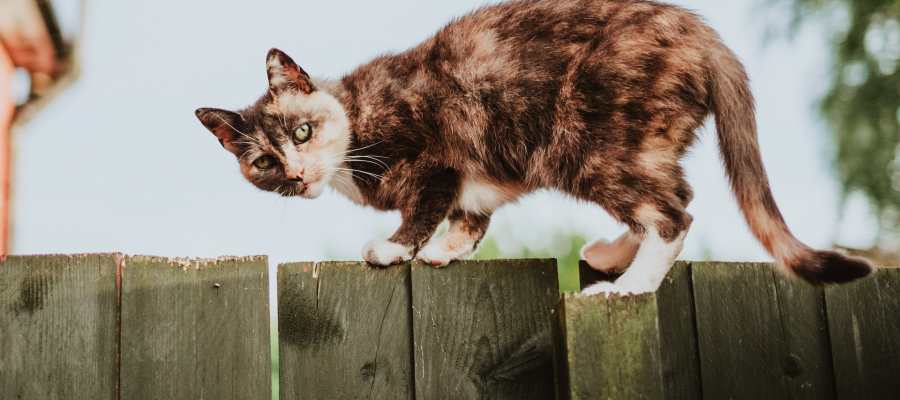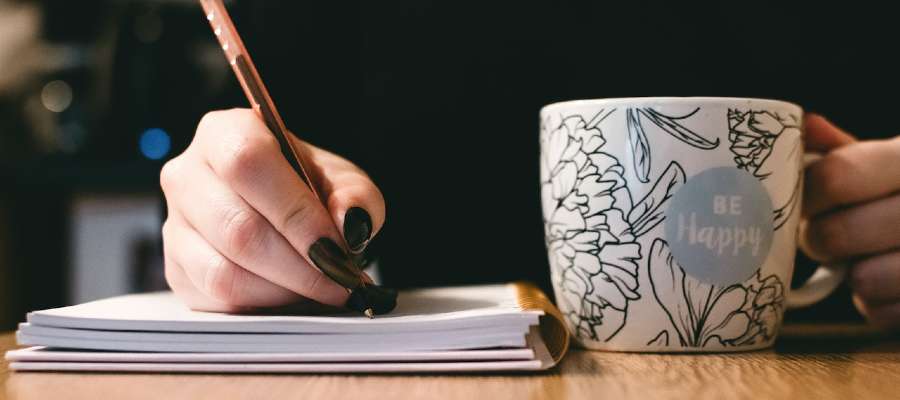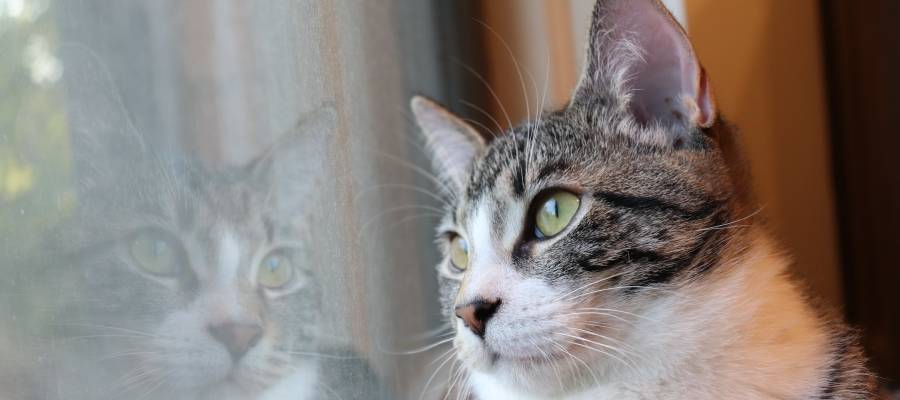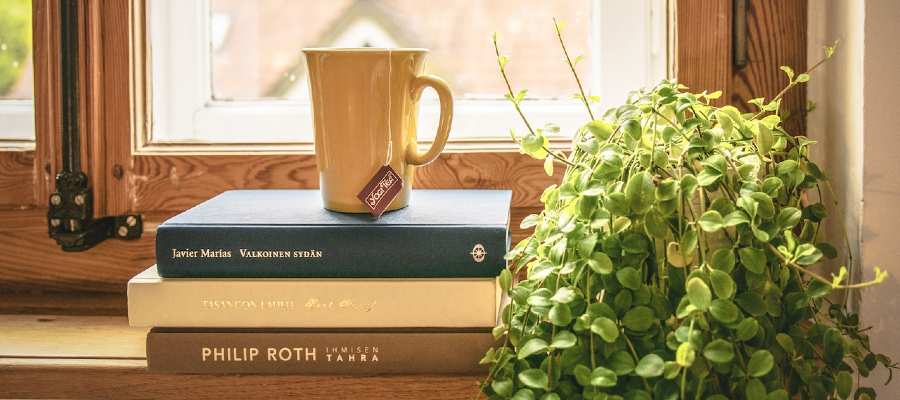How to Write a Story
On this page, you'll find lots of information about how to write a story. But maybe you don't want to read lots of information...
Maybe you just want to get started writing fiction right away!
That's fine! In a minute, I'll give you a shortcut you can use to write your story right now.
If you'd rather read more about how to write a story first, you can skip to another topic.
- A shortcut to writing a story
- Develop a character
- Develop your plot
- Develop your setting
- Write scenes
- Use "showing" and "telling"
- Choose your point of view
- Use dialogue
- Use descriptive details
- Revise your story
- Publish your story
A shortcut to writing a story

Here's a simple approach for how to write a story.
1) Come up with a situation where your character is dealing with a problem.
Examples:
- They suspect their spouse is cheating on them.
- They are trying to escape from a kidnapper.
- The new home they just bought appears to be haunted.
If you're stuck for ideas, feel free to use one of the examples above.
2) Before you start writing, you can spend a few minutes to explore the idea in your imagination.
Imagine you're the character in the situation you've chosen. What would you do? What might happen next?
Daydream the scene from your character's perspective. Let it play in your head like a movie.
Try to make your daydream as vivid as possible, paying attention to sights, smells, sounds, and sensations.
3) Now, take detailed notes on your daydream.
Don't worry about style or how your writing sounds. You'll go back and edit later. First, just focus on capturing the details and feeling of the scene, as if you were writing in a diary about an experience in order to preserve the memory.
4) Ready to go back and edit?
Part of crafting a story is choosing which details to keep, and which ones to leave out. Think about what it felt like when you were daydreaming the scene. Which details are important to that feeling? Which ones can you leave out and still recreate the overall experience? Use your daydream of the scene as a point of reference when you are editing.
We offer a short course on how to write a story's beginning, middle and ending. You can take it for free here.
Hooray! You've written a story!
Develop a character

How to get character ideas
There are endless ways to get character ideas. Your characters might be inspired by people you know or by strangers you see on the street. You can use photos or paintings as a starting point. Or, you can just write down a random name and see what image it brings to your mind.
Here are some prompts to inspire you...
- Imagine a character who acts rude, but is actually just shy.
- Imagine a character who desperately wants to impress their older brother.
- Write about a character who is secretly planning to leave their marriage.
Now, YOU complete the sentences to get even more character ideas:
- Imagine a character who acts ________, but is actually ________.
- Imagine a character who desperately wants ________.
- Imagine a character who is secretly ________.
Click here for a free e-book with 160 photos to give you character ideas.
Character profiles
Character profiles are a tool for getting to know your characters better so you can bring them to life on the page. Make notes for yourself on the character's appearance, personality, history, current situation, close relationships, hopes and fears. You can use these character profiling questionnaires to develop your character.
Click here to get our e-book of character profiling questions for free.
Note: Most of the information in the profile might NOT actually end up in your story. The character profile is just a behind-the-scenes tool to help you imagine the character more fully.
Showing your characters
One mistake that beginning writers often make is to introduce each character to readers with a little biography. There are other ways to help readers get to know your characters.
Think of the way you get to know real people. Normally, they don't introduce themselves to you saying, "I'm so-and-so. I'm a divorced 34-year-old doctor with two small children. I love to paint, and I'm afraid of intimacy."
Instead, you form an impression gradually. You notice:
- Their physical appearance.
- The way they dress.
- The way they talk and what they talk about.
- Their gestures and habits.
- The way other people react to them.
- Their actions.
You can use the same types of clues, sprinkled throughout your story, to let your readers gradually get to know your characters.
TIP: To show what your characters are REALLY like, put them in stressful and difficult situations that bring out extreme aspects of their personalities.
Develop your plot

How to write a story that goes somewhere
For there to be a story at all, something has to happen or change. The story has to go from Point A to Point B.
What happens could be:
- A physical event (Point A = Amy's ex-husband is trying to kidnap her son. Point B = Amy's ex-husband is arrested.).
- A decision (Point A = Ellen wants to marry Steve. Point B = Ellen decides to marry David instead.).
- A change in a relationship (Point A = They hate each other. Point B = They love each other.).
- A change in a person (Point A = Martin is a jerk. Point B = Martin learns to be less of a jerk.).
- A change in the reader's understanding of a situation (Point A = We believe Ellen has been framed for murder. Point B = We discover that she's actually guilty.).
What happens could even be the realization that nothing will ever happen. (Point A = your character dreams of escaping prison. Point B = his dream of escape is shown to be hopeless.)
The sequence of events between a story's Point A and Point B is called the story's plot.
Plot structure
So, how do you get a story from Point A to Point B? You introduce a conflict, or problem.
If everything's just fine at Point A, then there's no reason for anything to change. If characters are satisfied with their lives, they are not motivated to take drastic action. They can just stay put, enjoying their happy marriages and lovely homes, strolling the landscaped streets of their adorable town, crime rate zero. These characters have everything they need and want, so there is no reason to keep turning pages. This is the end of the story. Unless... we add a destabilizing element (Political corruption? Infidelity? Werewolf epidemic?)
A classic plot structure looks like this:
- (Point A) You introduce the character and the character's problem.
- The character struggles against this problem. The struggle increases in intensity until it reaches a peak. This is called the climax of the story. It is the the decisive moment which determines the results of the character's struggle.
- (Point B) You show the results.
TIP: If you're ever feeling stuck a story that doesn't seem to be going anywhere, check to make sure it has a clear conflict. If the conflict is weak or nonexistent, the story will seem flat. It may read more like a description or anecdote than a story. A strong conflict will give the story a focus and move things alone.
Develop your setting

How to write a story setting
Your setting is the time and place of your story.
Does your story happen in present-day Philadelphia? Does it happen on a French battlefield during World War II? Does it happen in the year 3010 on a planet you've invented?
Your choice of setting has an impact on nearly every aspect of your story, from the way characters talk and what they talk about, to the objects in their homes and the scenery around them.
Researching your setting
Just as it's helpful to get to know characters before writing about them, you want to have a detailed knowledge of your setting so that you make it real for your readers.
You have a head start if you choose your hometown or another place you know well to be your story's setting. You already have a detailed map in your imagination -- you can close your eyes and picture it in detail; when your characters move around in your setting, you know what they see.
On the other hand, you might want to set your story in a place you've never been. The trick then is to get the place in your imagination so that you can visualize it as clearly as your hometown.
If you're writing about a real place, you can travel there or look at pictures, read about it in books and on the Internet. If you're writing about an imaginary place, you might want to start a notebook where you invent details about it,. You might even want to draw maps and collect or draw pictures to help you imagine different aspects of your setting.
Our Setting Questionnaire will help you develop your story's setting. Click here here to get it for free.
Write scenes

How to write a story in scenes
Beginning writers have a tendency to summarize their stories instead of writing scenes.
Here's an example of summary:
I came home after midnight. My mother was furious, and threw me out of the house.
Here's the beginning of a scene:
I unlocked the door as quietly as I could and slipped into the dark kitchen. Then I saw my mother standing there in her long nightgown, silhouetted by the light from the hall. I expected her to shout at me, and when she spoke quietly, almost whispering, the effect was chilling. "If you can't follow the rules of this family," she said, "then you can't live here anymore. Go pack your things and get out."
Do you see the difference? A scene SHOWS the story's events instead of just TELLING about them. Scenes use dialogue, action, and descriptive details to help readers feel like they're watching things happen in "real time".
If you write a whole story as summary, the result can be boring, like a Wikipedia article.
On the other hand, summary is sometimes useful if you want to quickly fill in background information or to create transitions between scenes.
Use "showing" and "telling"

How to write a story that "shows" instead of only "telling"
Let's say you are writing about a boy named Nathan, who is a bully. You could simply TELL readers, "Nathan is a bully."
On the other hand, if you SHOW Nathan tormenting a child on the playground, readers will decide on their own that Nathan is a bully. And this "first-hand" observation will have a lot more impact than any information you "tell."
Readers won't love or hate a character just because you tell them to. But, after watching Nathan grind mud into a little girl's face, readers are likely to hate him.
Here are some examples of "telling" and "showing".
TELLING: Andrea is upset, but trying to hide it.
SHOWING: Andrea forces a smile, but her hands are shaking.
TELLING: The hotel room was creepy.
SHOWING: Ivan sat on the bed, staring at stains the colored of dried blood in the carpet. The lights kept flickering, then suddenly went out, plunging him into darkness.
Now, you try it. How can you SHOW the following information?
TELLING: Mark's office is compulsively neat. (Ask yourself: What is the neatness LIKE?)
TELLING: Chrissie was annoyed with Lisa. (How do you know when someone's annoyed in real life? What signs tell you? How about this character, Chrissie -- how does SHE react to feeling annoyed?)
In general, showing is more vivid and interesting than telling. It has a greater visceral impact.
On the other hand, sometimes it makes sense to TELL instead of showing. If Ivan is a doctor, I don't have to make a special point of showing him in his white coat and stethoscope. I can just say, "He's a doctor." That quickly gives readers the information they need to know.
As a general rule, you'll want to show instead of telling when your goal is to make readers FEEL something.
TIP: Do you find yourself doing too much TELLING in your fiction? Here are some things you can do to help yourself switch to SHOWING.
1) Add dialogue. Let readers "hear" the exact words a character says.
2) If your character is alone, put another character in the room with them, and make them interact. It's hard to use "showing" in a scene where a character is sitting alone, thinking things over.
Choose your point of view

How to write a story from your character's perspective
Here's an example of the same scene told from three different points of view:
- Waiting in front of the restaurant was a short blond man with a smug smile, who Laura knew had to be Ron. His t-shirt, she noticed with disbelief, had the words "Boy Toy" printed across the chest in hot pink letters. "Where does my sister find these creeps?" she asked herself. (This version of the scene is written from Laura's point of view. It is written in the third person -- in other words, Laura is called "she" instead of "I.")
- Ron saw a plump red-haired woman approaching him. Not his type at all. "You must be Laura," he said, forcing a smile to mask his disappointment. (This is written from Ron's point of view. Again, it's in the third person -- Ron is "he," instead of "I.")
- From the balcony, I watched a couple talking in the doorway of the restaurant across the street. The man was blond and wore a black t-shirt with some kind of pink writing on it that I couldn't read without my glasses. The woman was heavy-set with dyed-orange hair. (This is written in the first person -- the narrator uses the word "I" instead of "he" or "she.")
- Imagine that the reader is actually present at this scene, watching it unfold. Where is the reader sitting? Are they standing behind Ron, watching over his shoulder? Are they inside Ron's head? Can they see his thoughts? Are they sitting on a balcony, looking down at it all from above? The answer will change her perspective on everything that happens.
For example:
- If the reader is inside Laura's brain, they can't see Ron's thoughts. They can only guess at his thoughts based on external clues such as his behavior, speech, gestures, etc.
- If the reader is inside Ron's brain, they can't see what his face looks like (unless he is looking at his reflection).
- If the reader is watching the scene from a fourth floor balcony, they probably can't hear what the characters are saying or see small details like Laura's chipped tooth or Ron's diamond earring.
How to write a story from the best point of view
If we are going to write a story about Ron's blind date with Laura, we should choose the narrative viewpoint that works best with our goals for the story. What parts do we want the reader to see first-hand? what information do we want the reader to be able to access? Whose thoughts do we want the reader to see? These are all factors to consider.
If we decide to switch between one viewpoint and another, we have to be careful not to confuse or disorient the reader. On the other hand, if we limit the viewpoint to just one character, the reader will tend to feel a stronger intimacy with that particular character. It's as if the reader becomes that character for a while.
TIP: If you're struggling with a fiction piece that seems a bit flat or dull, you might try rewriting from a different character's point of view to see if that makes the story more interesting.
Write dialogue

How to write a story with great dialogue
There are two kinds of dialogue:
1) Direct dialogue, where the reader "hears" what the character says: ("Do you have a magic pill?" Tony asked the pharmacist.)
2) Indirect dialogue, where the reader gets a summary of what the character says: (Tony asked the pharmacist if she had a magic pill.)
Your character's voice
Imagine standing on a street corner, asking everyone who passed by for directions to a post office. If you asked ten people, chances are, you'd get ten different answers. Even if they suggested the same route, they would use different words to explain it. Even the "I don't know" answers would likely come out differently:
"I'm sorry, I really couldn't say."
"No friggin idea."
"Get a map, man."
Each person has a unique voice and a unique style of talking. So should each of your characters.
Some factors that will affect how your characters talk include:
- Background and culture
- Age
- Educational level
- Personality. (Is the character shy? Diplomatic? Aggressive? Insecure? Snobby? Bossy? Flirtatious?)
- The character's emotions at that moment. (Is the character nervous about what he or she is saying? Proud of it? Trying to cover up something?)
- The character's relationship with whoever else is part of the conversation. (We don't speak to our kids the same way we speak to our boss.)
Writing direct dialogue
Your challenge as a writer is to capture your character's voice without boring the reader with all of the fluff, filler, and incoherence of real speech.
In real life, we hem and haw, cut off our own sentences, change the subject half-way through, repeat ourselves over and over. If you write dialogue the way people really talk, you will quickly lose your reader's attention.
The trick is to include just enough of the character's natural speech mannerisms so that the reader gets the flavor.
TIPS:
- Do you know someone with a background and personality similar to your character's? Listen carefully to that person's speech patterns. When you write dialogue for your character, imagine the words spoken in that person's voice.
- It is also a good idea to speak dialogue out loud as you are writing. You can improvise it out loud, then write down what you've said. Or you can write the dialogue first, then read it out loud as a test to see if it sounds like natural speech. If not, rewrite until it does.
When to use indirect dialogue
There are times when indirect dialogue (where the reader gets a summary) works better than direct dialogue (where the reader "hears" what is said).
Two examples:
- "She repeated to her husband everything that had just happened. He listened to her for hours, until the sun started to come up.
- "We almost died of boredom as Aunt Bertha went on and on about her poodle's weight loss program."
Dialogue tags
Dialogue tags are the "he said," "she said," labels that tell the reader which character said what. Sometimes you don't really need these because it is clear who is speaking. Where they're not necessary, you can leave them off. In general, writers also start a new paragraph each time the speaker changes.
There are also more colorful dialogue tags such as "he shouted," "she muttered." Be careful not to overuse these, or it can get distracting for the reader. If the dialogue is written well, the reader should be able "hear" the difference between scolding and cajoling, so neutral dialogue tags ("say," "tell," and "ask") are generally enough.
Dialogue format
Dialogue format is different in different countries. To find out how dialogue is normally written in your own country, just look at some novels that have been published in your country and use them as examples.
Here is an example of how dialogue is normally written in the U.S.:
"I know you took one," Anna said.
"It wasn't me," said Bobby.
"Yeah, right." Pointing to the cookie jar, Anna said, "Your fingerprints were all over it."
Examples of common mistakes:
- "I know you took one." Anna said. (This should be written as one sentence).
- ...Anna said, "your fingerprints were all over it." (Since the quotation is a complete sentence, it should start with a capital letter.)
- "I know you took one," Anna said. "It wasn't me," said Bobby. (Normally, there should be a paragraph break between these two sentences because the speaker changes.)
Use descriptive details

How to write a story that comes to life in the reader's mind
You can use description to guide the reader's imagination so that they imagine the story the way you do.
The first thing to remember about description is that it's part of your story, not decoration on top. You don't have to interrupt the action to present a block of description. You can use descriptive language and details within your scenes to bring them to life to the reader.
Use specific details
We're going to try an experiment. No reading ahead.
Imagine a room. Before you read on, take a moment to really form a mental picture of this room.
What if I tell you that the room is a restaurant kitchen -- does that change your mental picture?
What if I tell you that the restaurant's closed for the night, and the kitchen is dark except for the streetlamp shining in the back window. Did your mental picture just change again?
The more specific information you give the reader, the closer the reader's mental picture will be to the one you intended.
The same principle applies for describing characters. If you tell your reader that Chris is blond, the reader's idea of Chris might be very different from your own. If you say that Chris is a three-year-old girl with blond curly hair and glasses, you are focusing the reader's mental image.
But use the right details
Your reader will not have infinite patience to read long descriptions. And if you pile on the details, at some point it becomes too much. The reader cannot visualize so many details at once.
The key is choosing the right details.
TIPS:
- Look for details that suggest a larger picture. (If I tell you that my living room has a sofa and an armchair, that doesn't distinguish it from anyone else's living room. If I tell you that the sofa measures exactly five feet and four inches, that doesn't help you imagine it. If I tell you that the sofa has a hole in it that has filled with sandwich crumbs and loose change, then you start to form certain ideas about the type of place where I'm living... and it's not Buckingham Palace).
- If you're writing from the point of view of a specific character, ask yourself this: which details would THAT character be noticing at THAT moment? The details you choose to describe can express a lot about that character and the character's emotional state.
Use multiple senses
Apart from showing what things look like, don't forget about the other senses—sound, smell, taste, and touch.
Use powerful nouns and verbs
Before piling on the adjectives and adverbs, take another look at your nouns and verbs.
Choosing the right nouns and verbs allows you to express more in fewer words, intensifying the impact of your writing.
For example, take this sentence: "She took the food out of his hand quickly, greedily, and forcefully." We can express the same information by saying, "She grabbed the food out of his hand."
The word "food" is also quite vague. It does not help the reader form a specific mental picture. What kind of food did she grab? It would be better to say, "She grabbed the sandwich out of his hand," or "She grabbed the doughnut out of his hand."
Our three-day online course on description writing is currently available for free. You can get access here.
Revise your story

At some point, the story or novel you're working on will be just about right. That's the time for polishing -- tweaking a word or a sentence here or there.
But before you reach that point, it's often worth trying to rewrite the piece from beginning to end. I mean actually starting over. On the one hand, this is a lot of work. On the other hand, this approach to revision can make first drafts a lot easier and more enjoyable, and it can lead to better results.
Your imagination can flow freely without your "inner editor" interrupting it. You can pour all your ideas onto the page, knowing you'll sort them out later. The first draft is risk-free, so it's less scary. You can experiment and try different approaches.
Your fiction is also likely to be stronger as a result of this approach. The first draft is often a kind of exploration to see where the story is going. In the process, you discover new things about your characters. The ending of the story is often not what you expected. The second draft is an opportunity to start again with the benefit of all of this information. Now you can write Page 1 with the exact knowledge of where you are headed.
TIP: Do you ever find yourself struggling for hours with a certain sentence or passage in your fiction? You revise and revise it, but can't seem to get it right. Try this. Put it down. Take a little break. Maybe go for a walk, or put in a load of laundry. Then come back, and -- without looking at the old version -- try to write a new version from scratch.
Click here to get a detailed revision checklist.
Publish your story

We've put together an e-book with detailed advice on how to publish a story, as well as a list of places where you can publish it. You can get the e-book for free here.
The Poets & Writers website has extensive databases of literary journals and writing contests.
How to Write a Story - More Resources
- Types of fiction
- Questionnaires for writing character profiles
- How to show your character's thoughts
- How to make your characters more interesting
- How to write a story villain
- Top 8 tips on how to write dialogue
- How to use descriptive beats
- How to write a story with the right amount of detail
- Creating suspense with setoffs and payoffs
- How long should your story be?
- How to write a story with plot twists
- Mental strategies for fiction writers
- Online course: Story Structure
- Online course: Bringing Characters to Life
- Online course: Mastering Dialogue
- Writing websites
How to Write a Story - Frequent Questions
"How do I start writing a story?"
"How do I start writing a story?"
Create a character, and imagine a problem facing that character. Daydream a scene in which the character is struggling with the problem. Then write the scene quickly, trying to capture your daydream on the page. Once you have it all down, you can go back and edit (it's normally better not to edit while you're writing your first draft). Normally, your story beginning should set up the character's struggle, and the ending should show or hint at the result of the struggle.
"How do I begin a story?"
"How do I begin a story?"
Your story beginning should capture the reader's interest and pull them into the story. It sets the story's tone and introduces the character's dilemma. It's often easier to come up with the right beginning after you've finished a rough draft of the story. So if you're having trouble coming up with a great first line, don't let that stop you! Just jump right into the story. You can go back and improve the beginning later. And sometimes starting partway through a scene actually makes for a dynamic story beginning.
Lesson 1 of our course Beginnings, Middles, and Endings goes step-by-step through how to write a story beginning. You can get the course for free here.
"How do I write a good story?"
"How do I write a good story?"
It's usually helpful to separate writing from editing. If you try to edit as you write, that can interfere with your creative flow. During your first draft, don't worry about how good your story is. Just try to imagine it as vividly as possible and capture everything on the page. Once you finish a draft, then it's time to revise and make your story great. You can use this revision checklist.